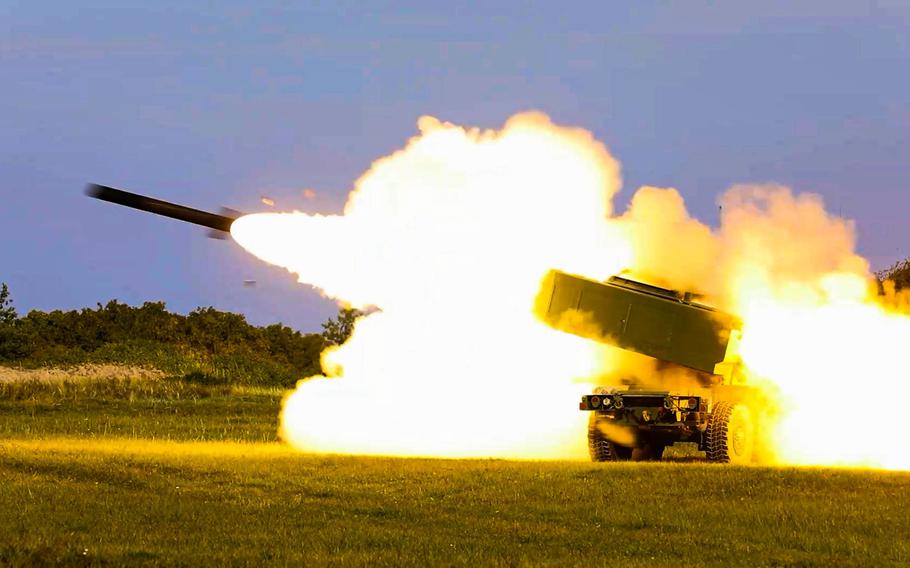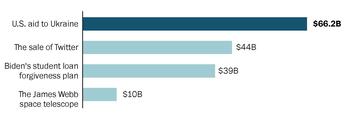
An M142 High Mobility Artillery Rocket System fires a practice rocket during an exercise in Liepaja, Latvia, Sept. 27, 2022. The U.S.-made system has been successfully deployed to Ukraine. (Ellison Schuman/U.S. Army)
The United States has committed more than $60 billion in aid to Ukraine since the beginning of Russia's full-scale invasion. That includes more than $43 billion in military aid.
That's more than the U.S. distributes in aid to any other country.
As the conflict enters its 18th month, U.S. public support for funding the war is wavering , particularly among Republicans.
Military aid is only part of America's commitment to Ukraine. Billions of dollars in economic and humanitarian aid have also been pledged to the country.
The funding includes weapons, training, medical supplies, generators and rebuilding. And experts view the amount as a massive investment in a U.S. ally not seen since at least World War II.
"These are off-the-charts numbers," said Michael O'Hanlon, a senior fellow at the Brookings Institution. He likened the figures to U.S. commitments to European countries at the end of World War II. The Marshall Plan, when adjusted for inflation, came to about $150 billion over three years.
It's hard to put these numbers in context. Sixty billion dollars sounds massive when compared with arbitrary data points such as the price of Twitter, the cost of the James Webb Space Telescope or the cost of the Biden administration's student loan forgiveness plan.
It can be pretty small when compared with the entire U.S. defense budget.
U.S. aid to other allies
But when compared with U.S. support for other nations, the commitment to Ukraine is singular.
The funding has eclipsed bilateral support for other U.S. allies, including Israel, Jordan and Egypt, some of the top recipients of U.S. support.
O'Hanlon also noted it has exceeded U.S. support for Taiwan, which in late July received a pledge worth more than $300 million in military assistance from the Biden administration, as China's military presence near the island increases.
International aid to Ukraine
While the United States is the leading donor to Ukraine, other countries have committed a much larger percentage of their GDP to fund Kyiv's efforts.
As the conflict drags on, U.S. popular support for funding the war is wavering. A June Pew Research Center survey found 44 percent of Republicans and Republican-leaning independents said the United States is giving too much aid to Ukraine. That has become a talking point among some GOP Senate candidates, as well as two of the party's presidential front-runners.
"We could do it forever," O'Hanlon said of this rate of funding and support for Ukraine. "It's not economically unsustainable. But it's probably politically unsustainable."
Data sources: Military spending on Ukraine from the Defense Department's Ukraine Security Assistance Initiative and presidential drawdown announcements as of July 25, as well as Foreign Military Financing figures from the State Department. Humanitarian and financial aid data from the State Department as of July 21. Total U.S. defense budget data from usaspending.gov. U.S. bilateral aid to other allies from Congressional Research Service reports. Comparative data taken from the Kiel Institute for the World Economy.
The Washington Post's Alex Horton and Federica Cocco contributed to this report.

()

()